Monumental Burmese Silver Model of a Temple
Monumental Silver Model of a Temple
Burma
dated 1914
height: 84cm, diameter of base: 51cm
This massive model of a Burmese temple, possibly modelled on a shrine in the Mandalay Palace, is of repoussed and chased silver. At 84 centimeters or 33 inches tall, it is an exceptionally tall example of colonial Burmese silverwork.
The model was commissioned by the Bombay Burmah Trading Corporation, a company intricately linked with Burma’s colonial history, for presentation to a retiring senior manager in 1914. A panel engraved with: ‘Presented to Berkeley John Byng Stephens Esquire by the Employees of the Bombay Burmah Trading Corporation Limited, Rangoon on his Retirement December 1914’, is affixed to the base.
The model stands on an eight-sided base that has eight elegant, open-work feet. One of the eight sides has the presentation panel. The other seven comprise finely repoussed panels relating to the Company’s teak operations in Burma. There are scenes of log carting by elephants, log processing, as well as the Company’s Rangoon head office.
The top of the base comprises repeated naturalistically-rendered rocky outcrops from which rise four separate watch towers, each topped with a flag pole and waving flag, all in silver.
Four sets of stairs, each with fine naga balustrades, lead to the first tier of the four-sided temple. The walls of the lower section of the temple are chased with scrolling vegetal motifs.
The first tier of the temple is ringed with a fine, open-work fence and railing. At each corner stands a solid cast figure in Burmese dress holding a book and a stylus. These are representatives of the Four Great Kings, one of whom dwells in each of the four quarters. The Kings are the guardians of Burmese Buddhism but also, according to Lowry ( 1974), make a monthly report on the activities of the human inhabitants of the earth, tabulating good deeds and sins.
The temple, on this tier, has on each of the four sides, an elaborate portico and door, each topped with an intricate, open-work pediment, and which leads to the temple interior.
The next tier has similarly columned doors and pediments, as well as elaborate open-work eaves.
Above this rises the spired, pyatthat roof of five tiers each decorated with elaborate open-work eaves and fringes. The top is surmounted by a spire and waving flag. In Burma, elaborate open-work roof-work such as this is achieved by finely cut-out shapes of hammered tin.
The model is in excellent condition. There are no losses, dents or repairs.
As mentioned, the Bombay Burmah Trading Corporation Limited is linked closely to Burma’s colonial past. It was founded by the Wallace brothers who were from a Scottish family from Edinburgh. The six brothers first arrived in Bombay in the 1840s where they formed a partnership, Wallace Bros & Co, in 1848. By the mid-1850s, the brothers had set up operations in Rangoon from where they shipped Burmese tea to Bombay. This business was floated on the Bombay stock market in 1863 as the Bombay Burmah Trading Corporation Limited, and remains the second oldest publicly quoted company in India today. The Wallace brothers retained a controlling interest. By the 1870s the company was a leading producer of teak in Burma and Siam. Other interests were in cotton, oil exploration and shipping. By the 1880s, the main business was the export of raw cotton and the import and sale of manufactured textiles from Lancashire.
The company became central to British colonial interests in Burma and northern Siam, so much so that it has been argued that the company was used in the 1880s-1890s by the colonial administration of India and the British Foreign Office to create a monopolistic hold over the teak forests of northern Siam, operating in the region as part of an informal empire.
The Company also played a central role in the pretext for the Third Anglo-Burmese War of 1885. It was accused of extracting timbers in areas beyond the agreed licence. It was alleged also that the Company had under-paid its foresters. The provincial government demanded compensation but the Company refused and appealed to the Court of Ava which ruled against the Company. The British colonial administration in Calcutta intervened, demanding not only that the Court overturn its ruling but that the Burmese government in Mandalay hand over all future foreign relations to its control. The government in Mandalay refused and the British moved on Mandalay with 10,000 troops, meeting only ineffectual resistance.
The Company’s head office was in Bombay, but its initial operations were in Burma and branch offices were opened in Rangoon and Moulmein in the 1860s or 1870s. It expanded its operations into Siam/Thailand in 1884, Java/Indonesia in 1905-6, South India in 1913, North Borneo/Malaysia in the late 1940s and East Africa in 1955.
Today, the Company remains listed separately but is controlled by the Wadia group of companies, which in turn is controlled by the Wadia family, one of India’s most prominent Parsee families, which first had its start in business in 1736 when it secured contracts from the British East India Company.
And so in this way, this silver temple model is both an extraordinary example of colonial Burmese silverwork, and a relic from a company with a colourful past tied up with Britain’s colonial past.
References
Fraser-Lu, S., Silverware of South-East Asia, Oxford University Press, 1989.
Lowry, J., Burmese Art, Victoria and Albert Museum, 1974.
Paing Hein Htet, ‘Burma and the British Empire’s colonization’ in Echo, 2011.
Provenance
The model temple remained with the UK-based Stephens family until around 1974 when it was sold. We acquired it from a US-based collection.
Inventory no.: 1691
SOLD
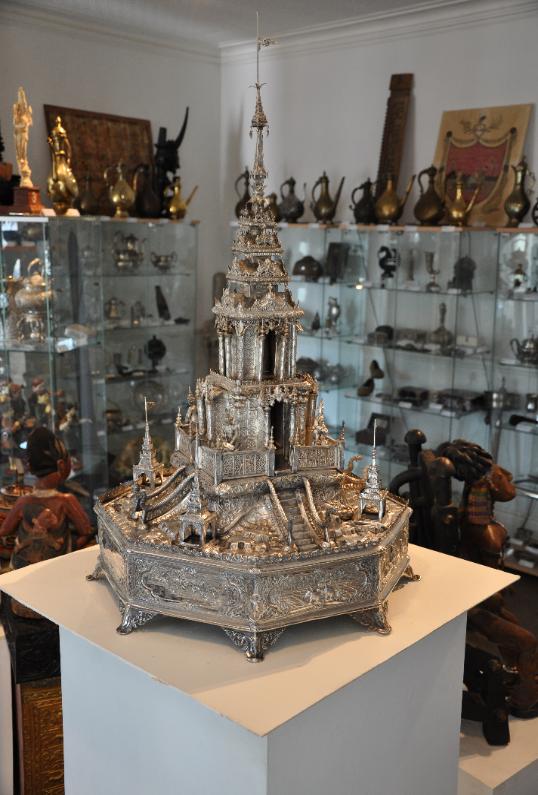
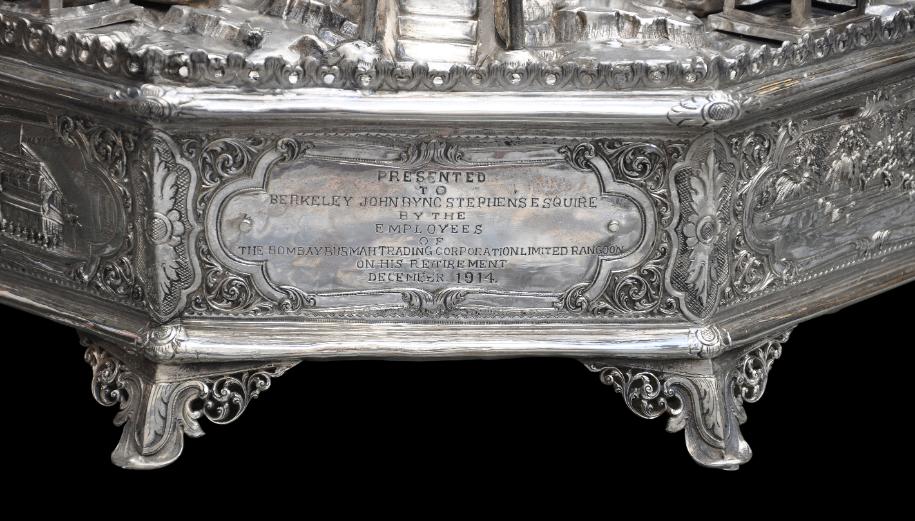
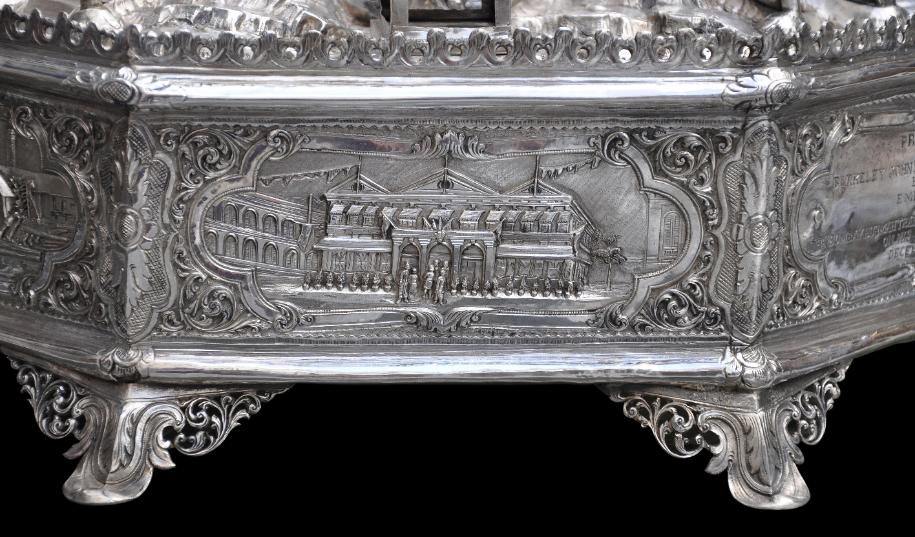
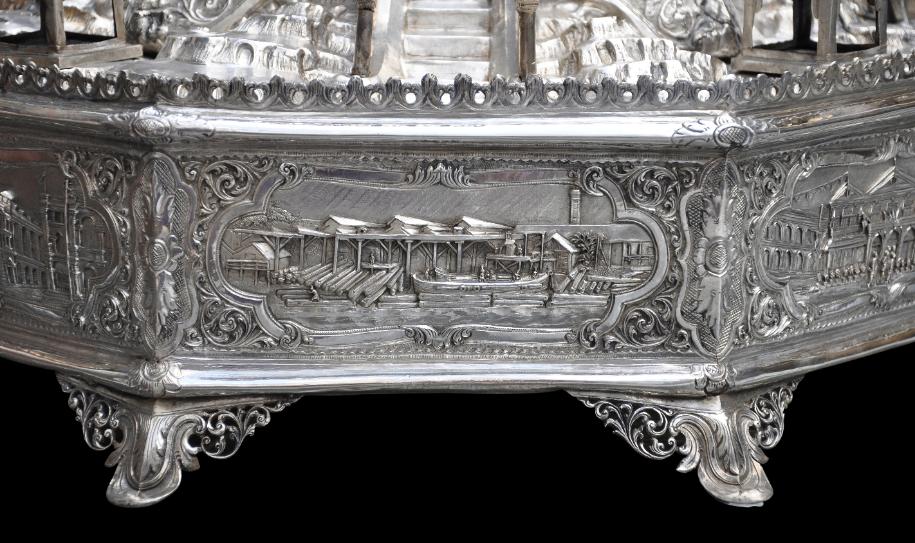
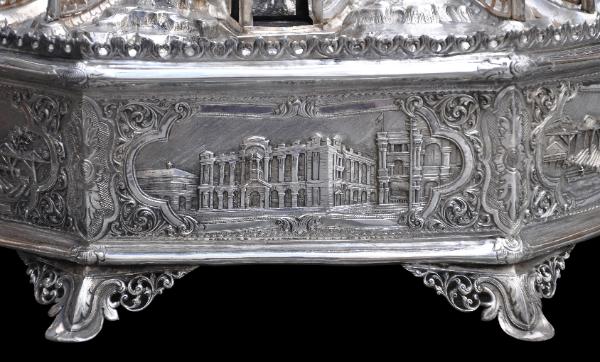
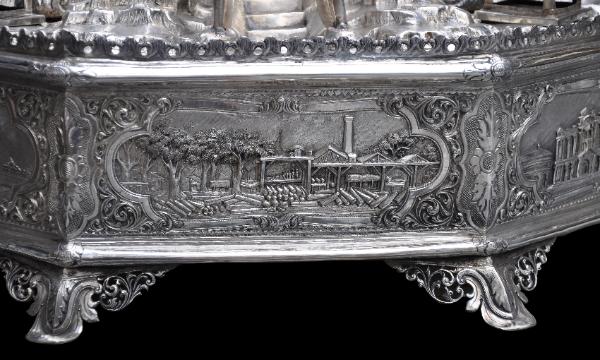
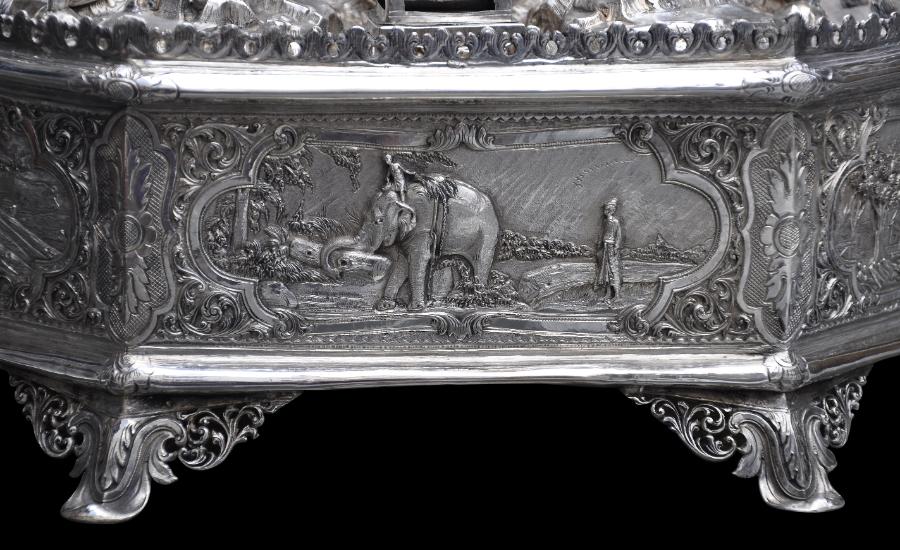
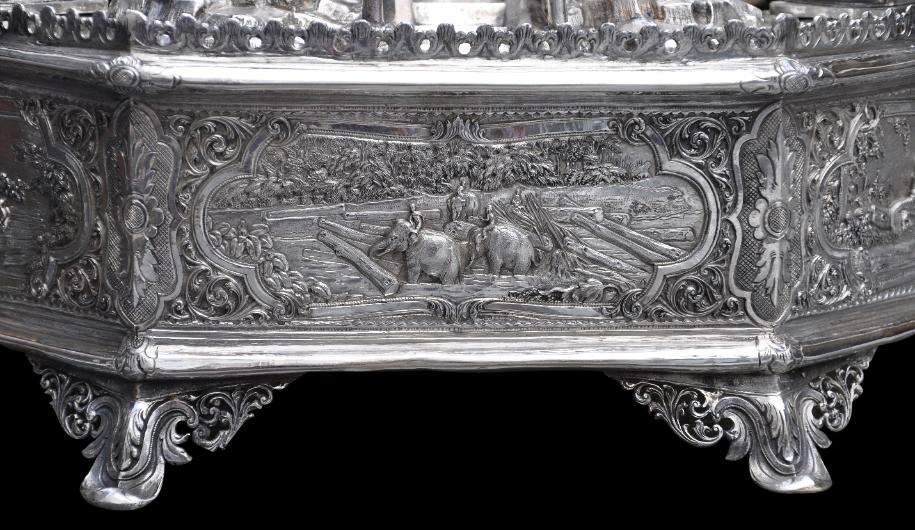
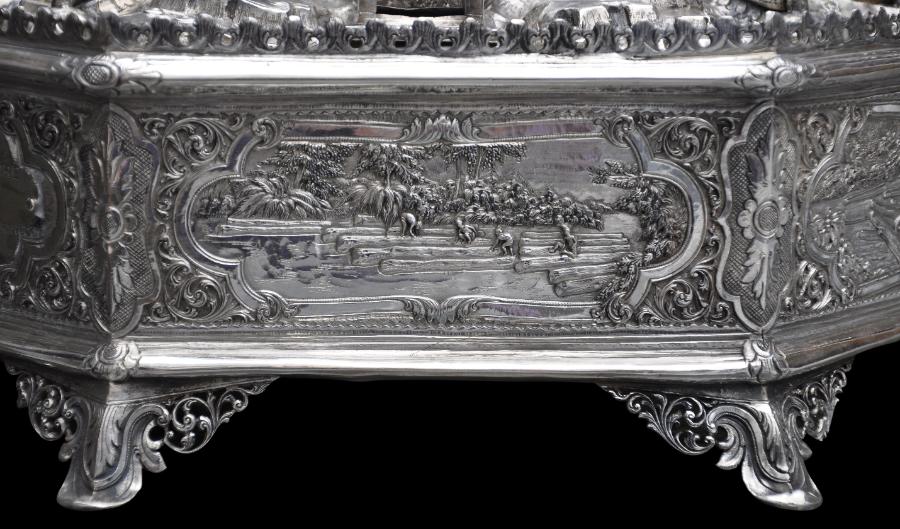
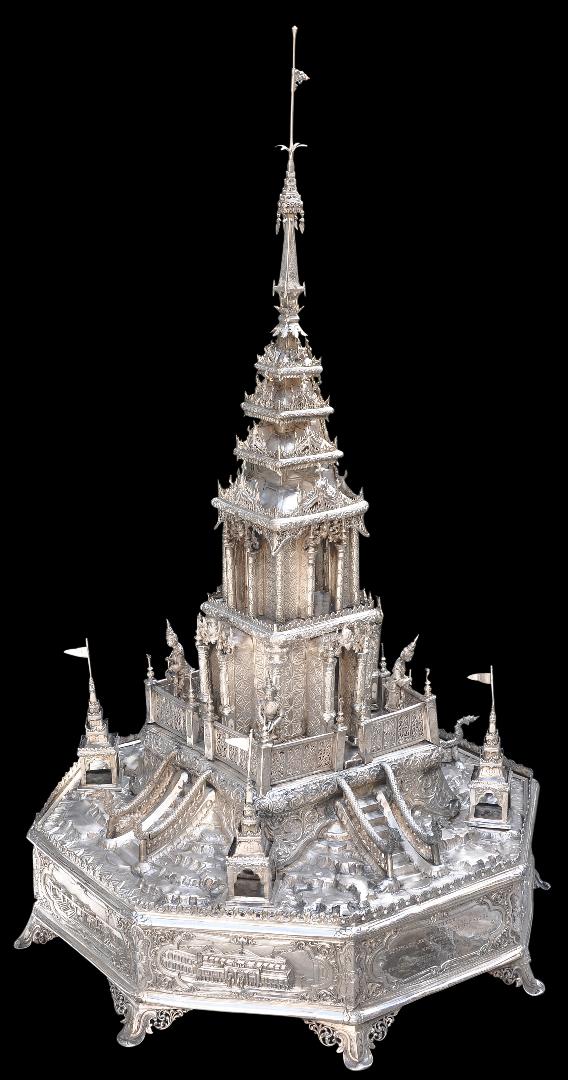
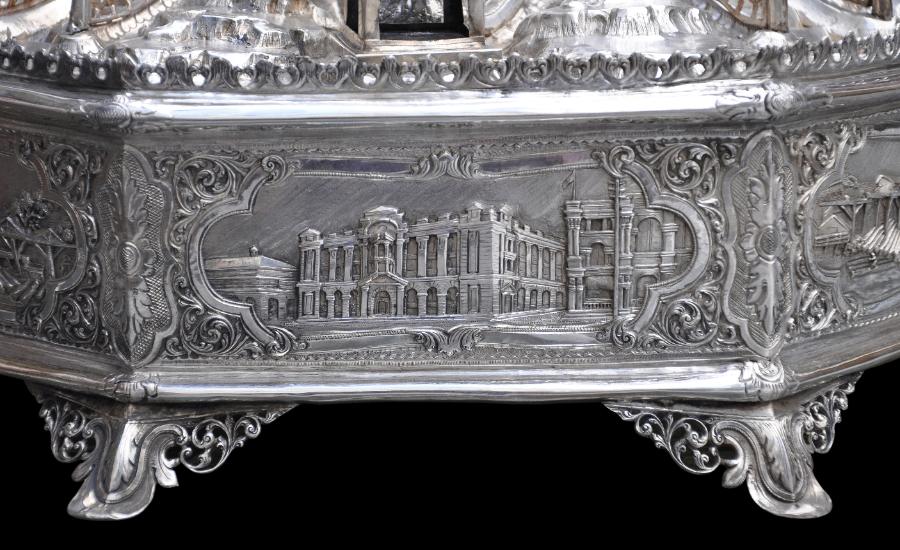
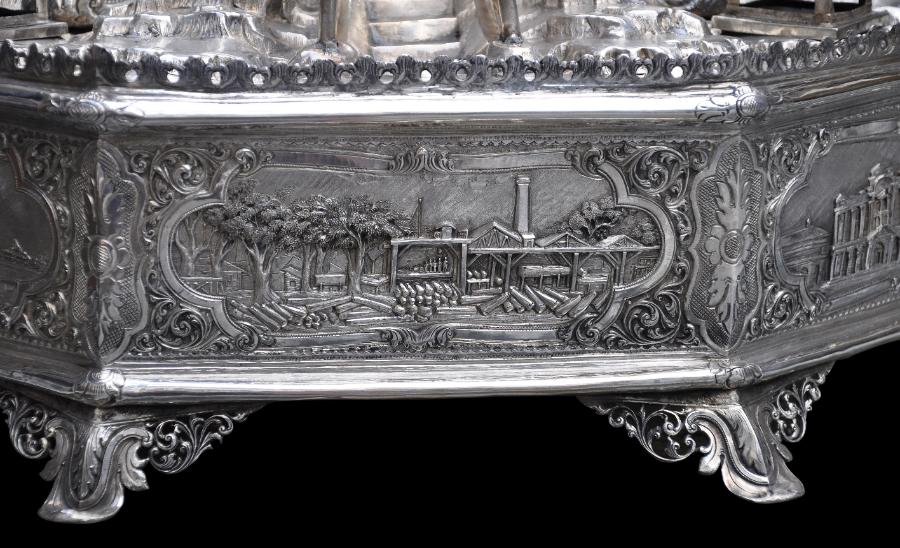
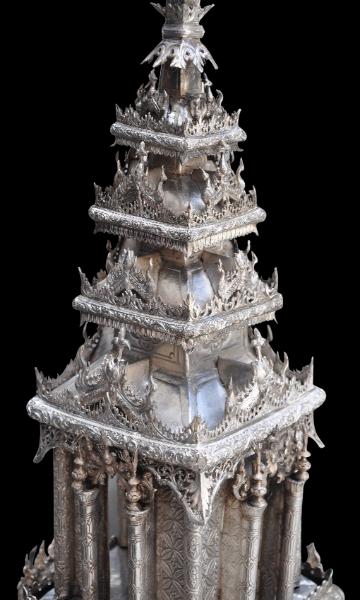
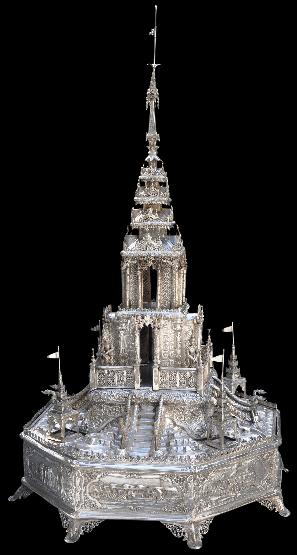
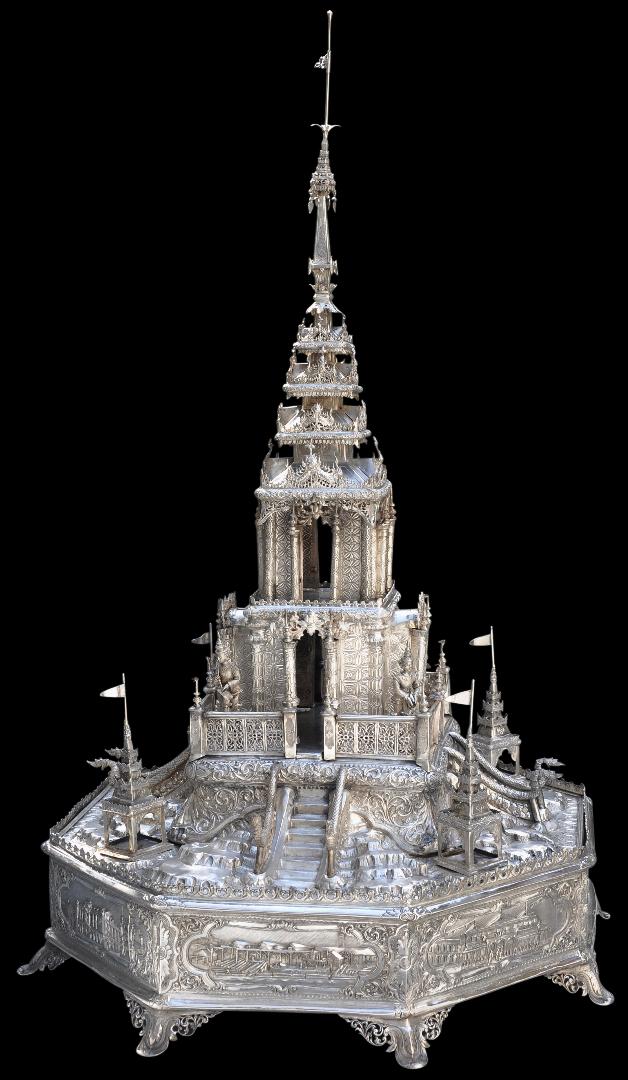
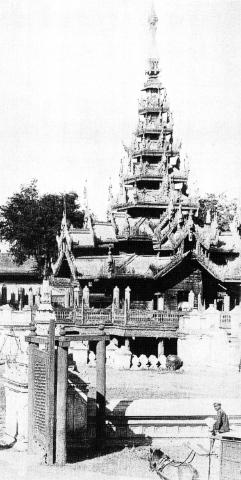
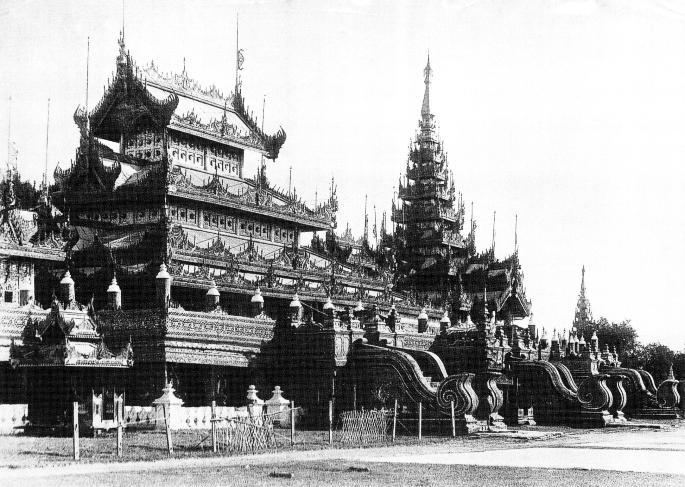
The temple model is based on certain types of high-roofed structures that were parts of monasteries and other complexes. The example on the left is part of the Ahtumashi Monastery, photographed in 1892. That on the right shows the Hman Kyaung Monastery around 1889.
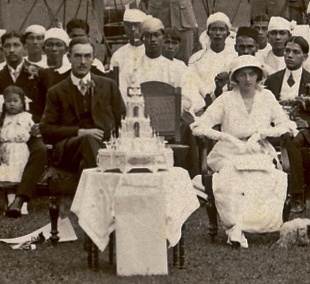
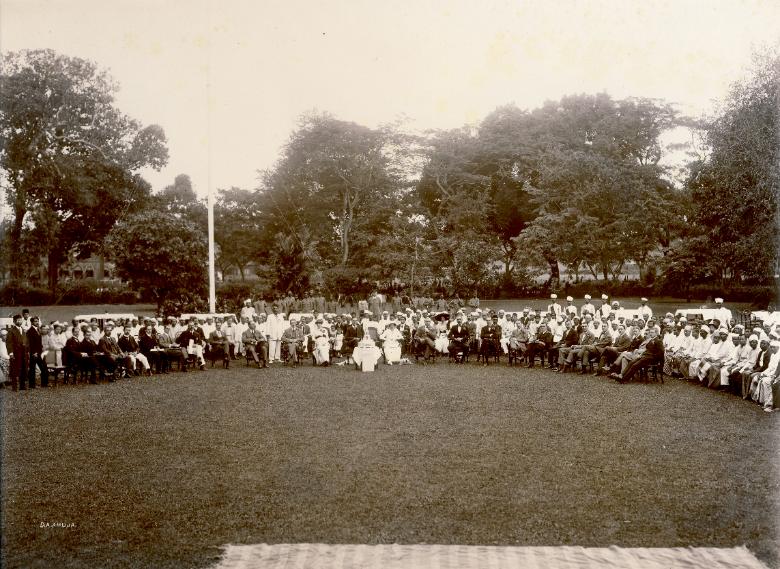
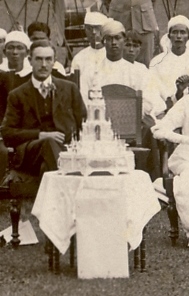
The presentation ceremony in Rangoon in 1914 during which this piece was formally presented to John Byng Stephens.

